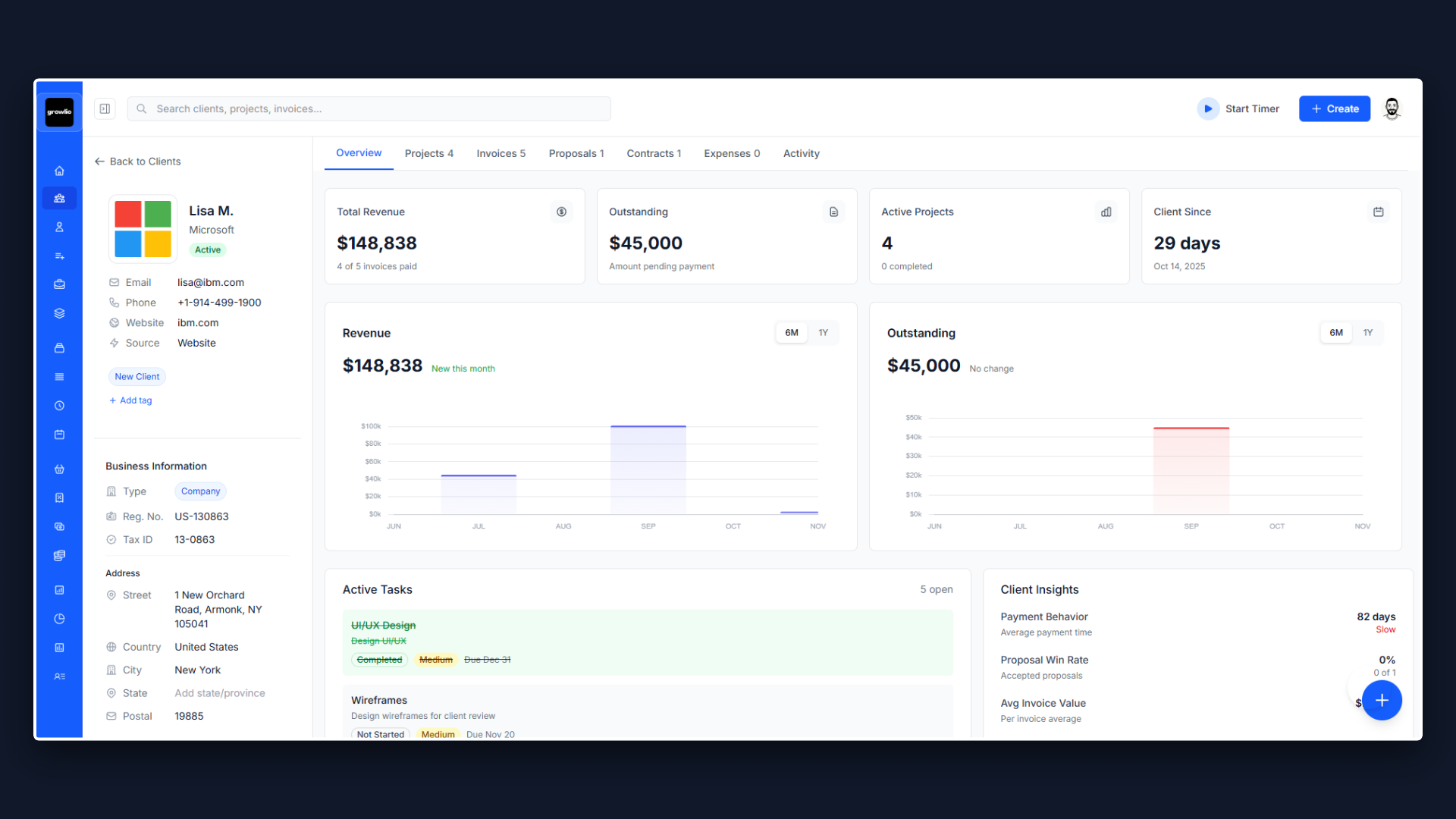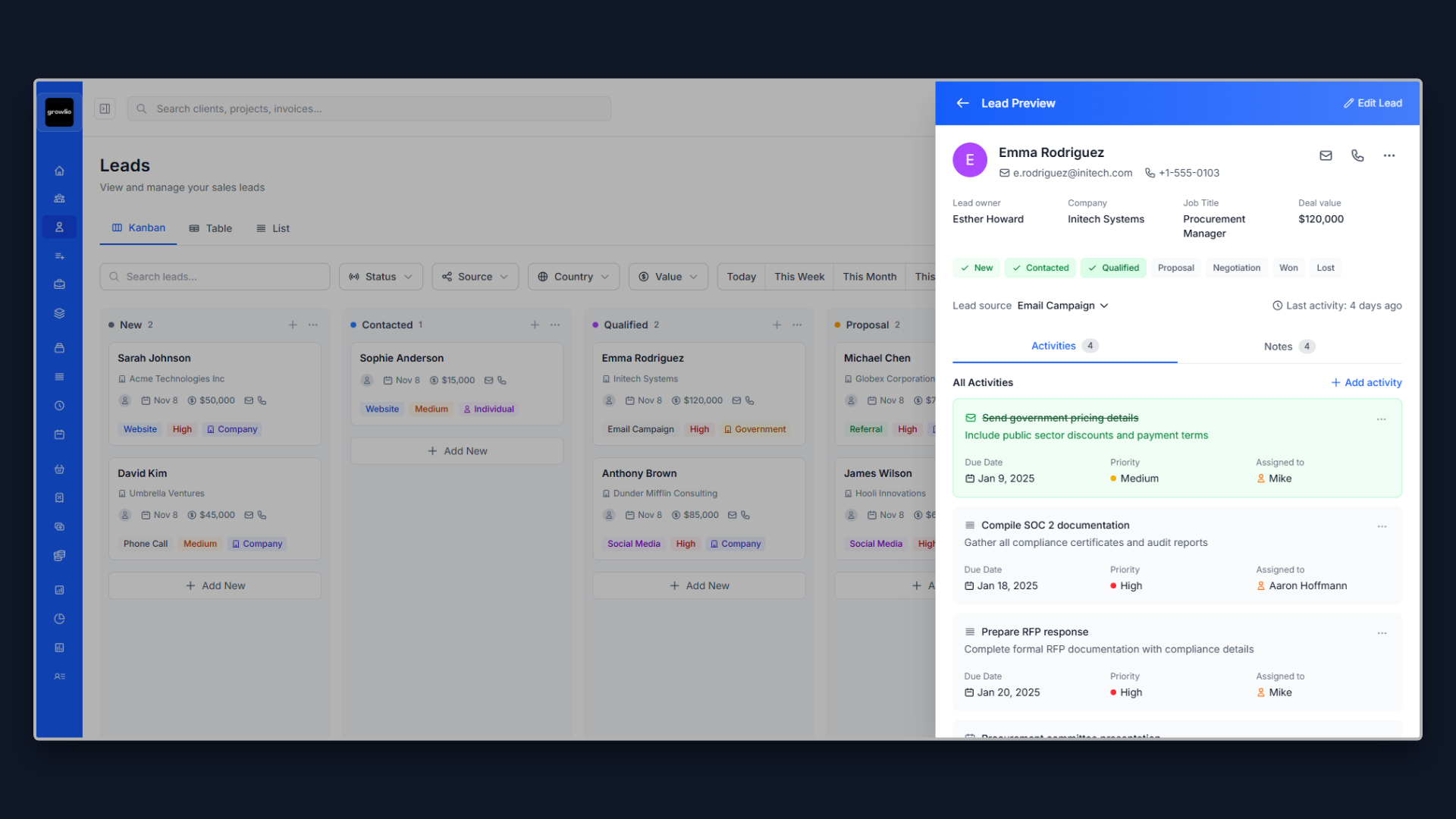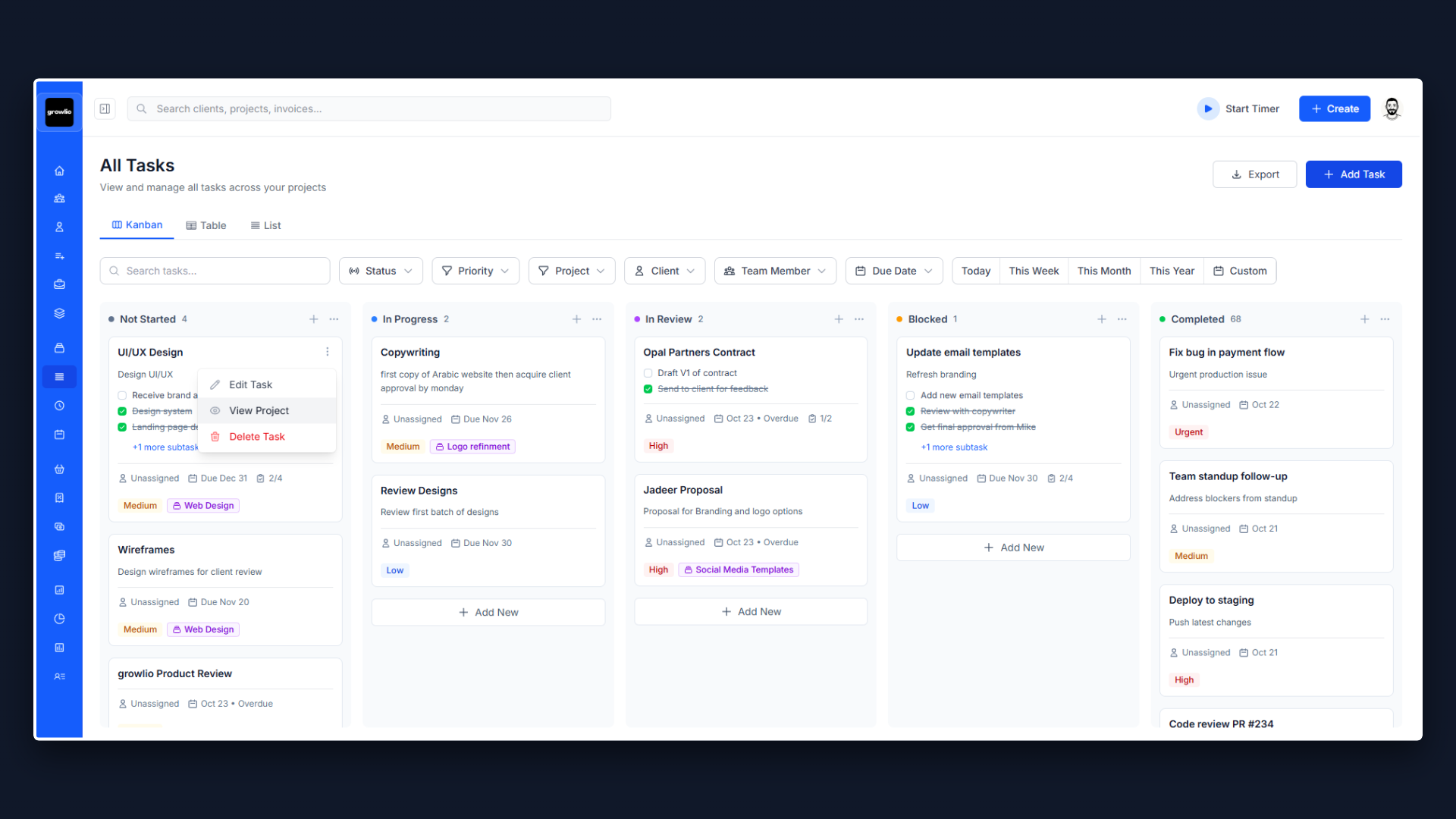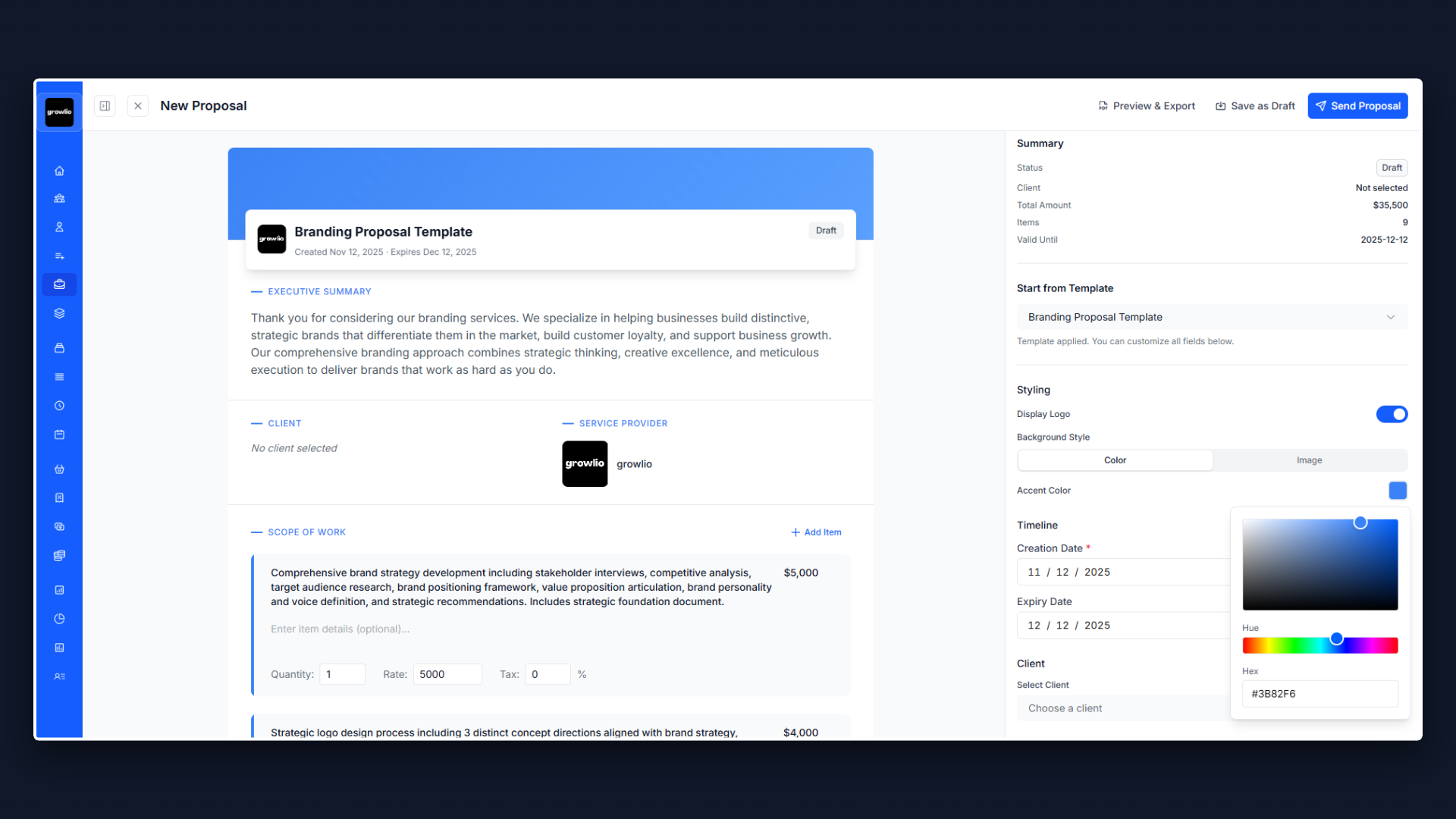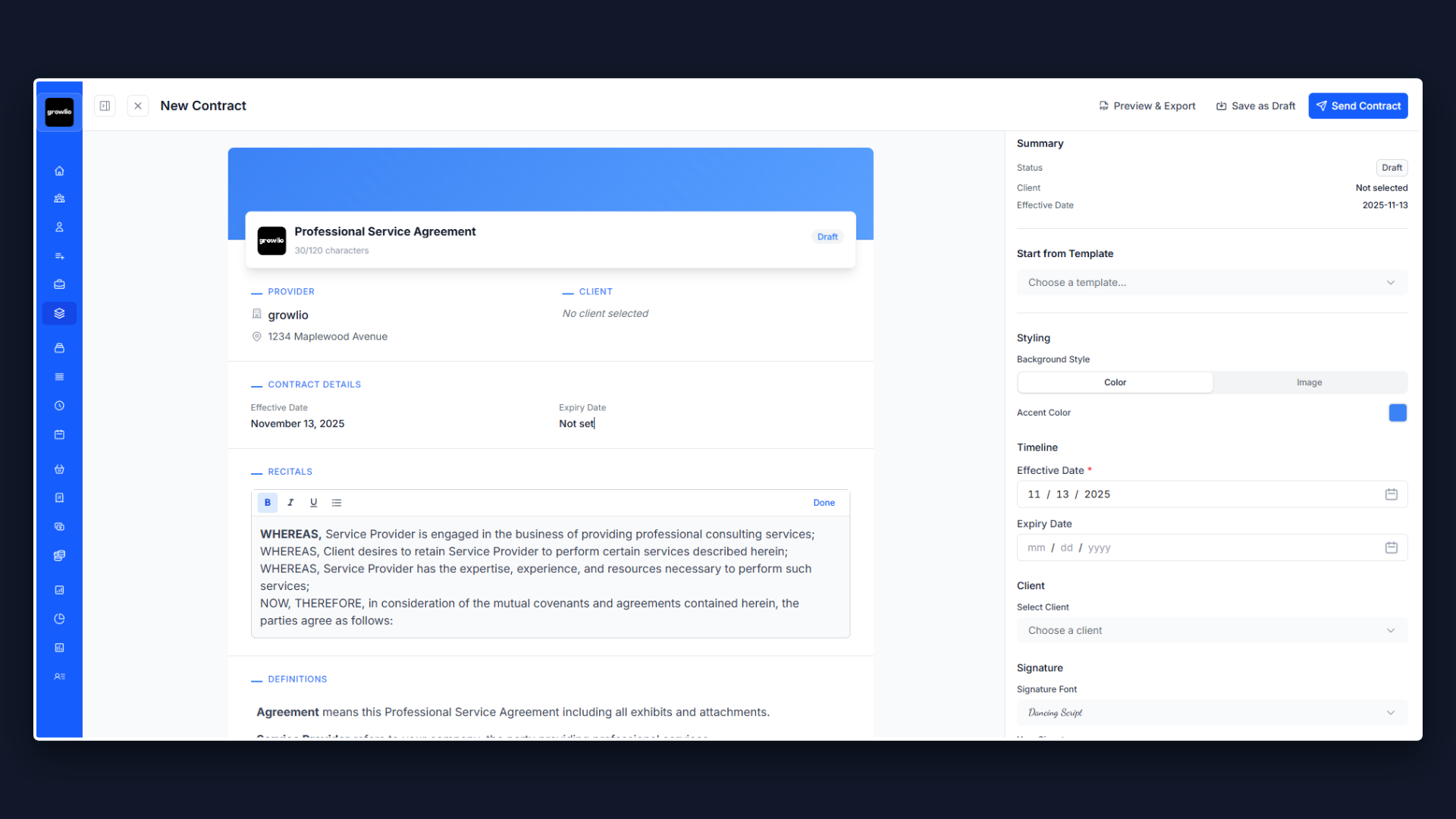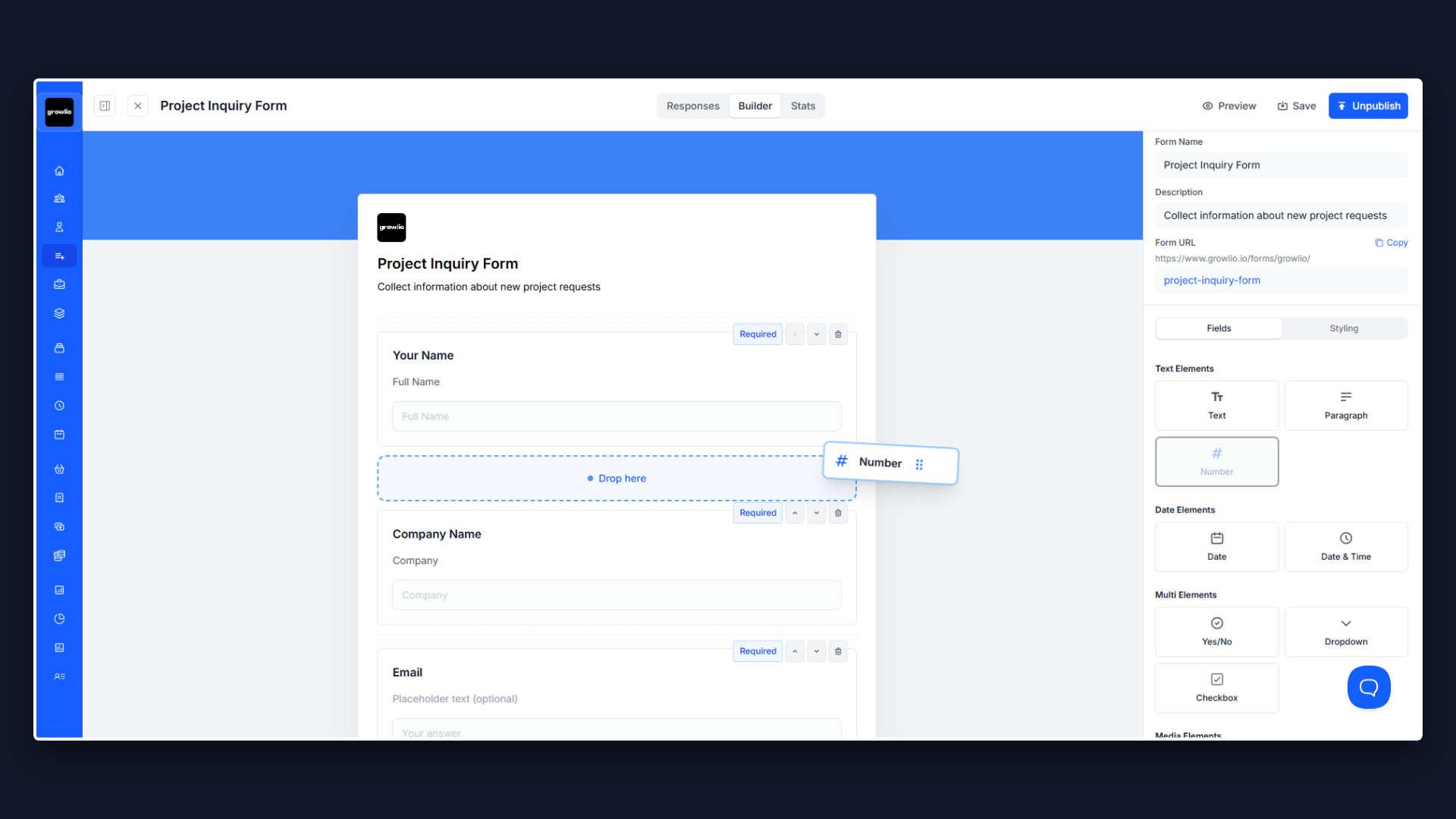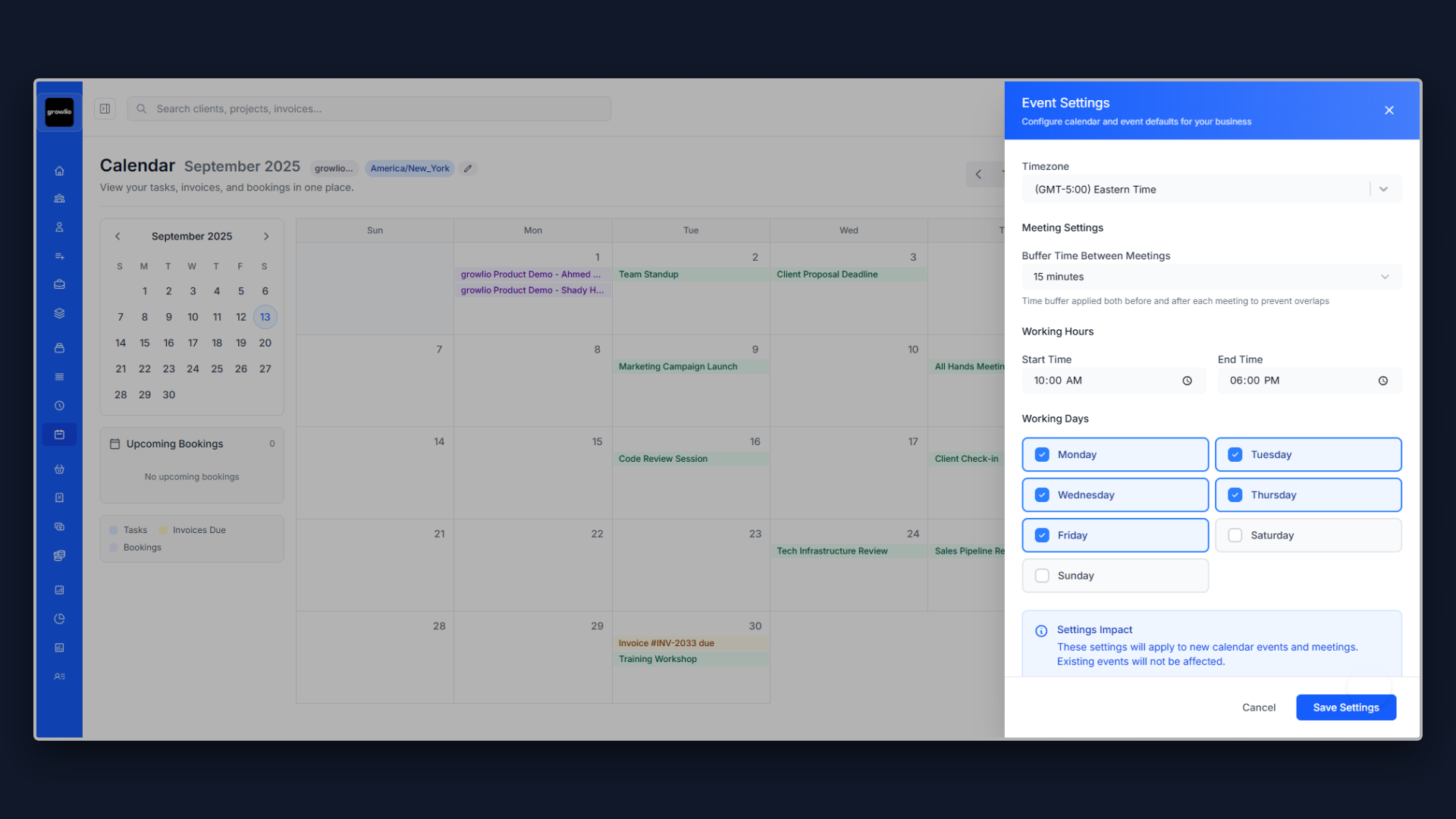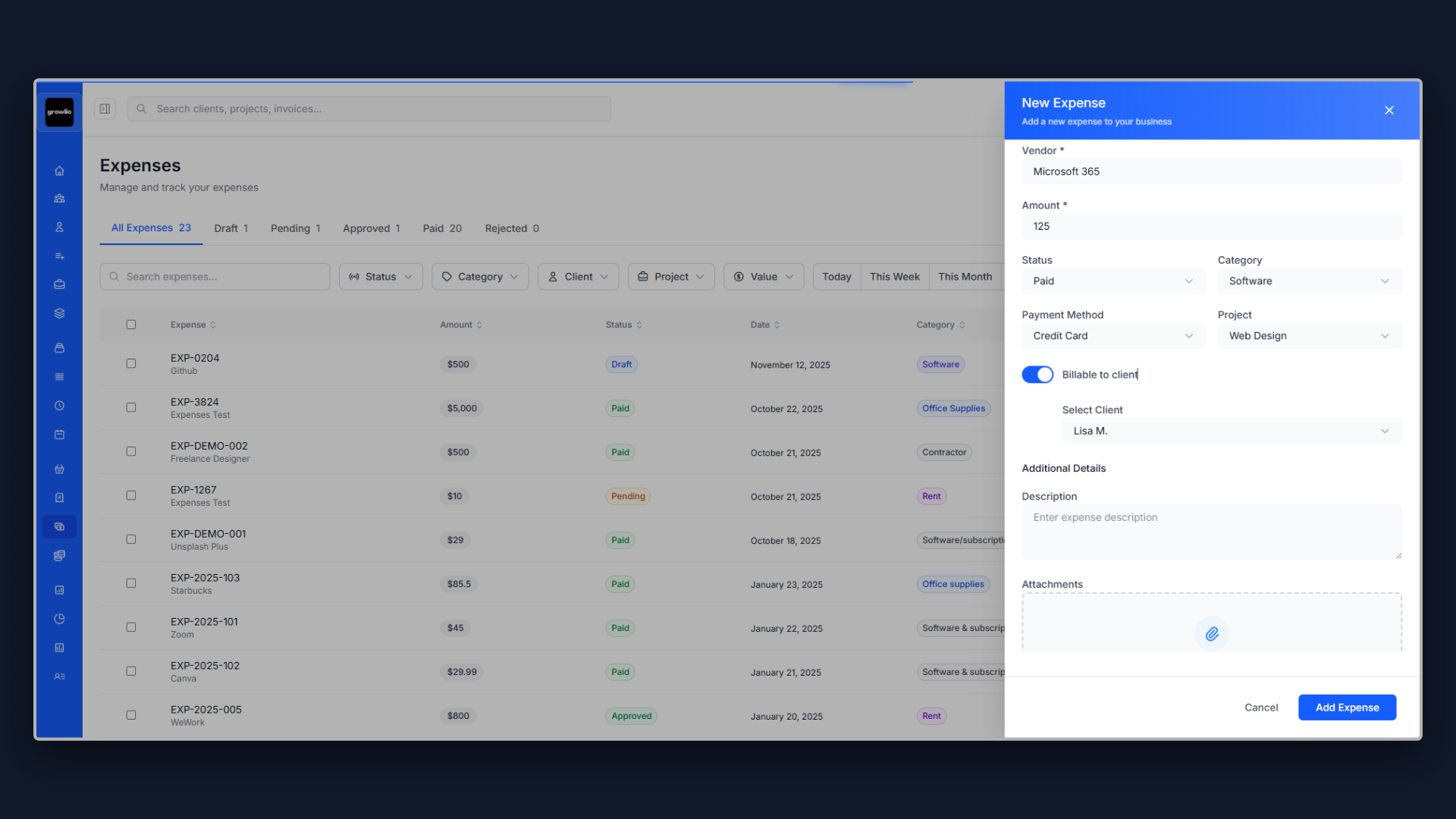Why Your Digital Marketing Proposal Makes or Breaks Your Business
As a digital marketing agency or specialist, you know that digital channels now account for 56% of all marketing spend and that businesses with integrated digital strategies achieve 3x higher revenue growth. But here is the harsh reality: even if you are exceptional at driving traffic, generating leads, and optimizing digital campaigns, you will struggle to win clients if your proposals do not demonstrate your value clearly.
The digital marketing industry generates over $450 billion annually, with businesses increasingly shifting budgets from traditional to digital channels seeking better targeting, measurement, and ROI. Yet many talented digital marketers lose contracts to competitors who simply write better proposals. This has nothing to do with your digital marketing skills and everything to do with how you present them.
Your digital marketing proposal is your first impression, your sales pitch, and your contract all rolled into one document. It needs to educate prospects who may be overwhelmed by digital complexity while simultaneously proving you are the expert they need. This is a delicate balance that many get wrong.
1. Start With the Client's Current Digital Presence Problems, Not Your Services
The biggest mistake digital marketers make is leading with a list of services: "We offer SEO, PPC, social media, content marketing..." Your prospect does not care about your services yet. They care about their problems.
Start your proposal by demonstrating you understand their specific digital marketing situation. Is their website invisible in search results? Are they spending heavily on ads with declining ROI? Is their social media presence weak or non-existent? Are competitors dominating digital channels while they struggle? Do they lack integrated digital strategy connecting channels? Address these pain points explicitly.
For example: "Our analysis shows your digital presence significantly underperforms competitors and industry benchmarks. Your website ranks on page 2-3 for key terms meaning you miss 75% of potential organic traffic. Your Google Ads spend $8,000 monthly at $145 cost-per-lead while competitors achieve $65-$85 CPL through better optimization. Your social media has 800 followers with 0.3% engagement rate versus competitor average of 8,000 followers and 3.2% engagement. You have no email marketing program despite studies showing email delivers $36 ROI for every dollar spent. This fragmented, underperforming digital presence costs you an estimated $400,000-$600,000 in lost annual revenue. A comprehensive digital marketing program could double your website traffic, reduce acquisition costs by 40-50%, and generate $1-2 million in additional pipeline value within 12 months."
This approach immediately shows you have done your homework and understand what is at stake. Now they are ready to hear your solution.
2. Include a Digital Marketing Audit to Demonstrate Your Expertise
Nothing builds credibility faster than showing you have already assessed their digital presence. Include a brief audit section highlighting 3-5 critical issues:
Website and SEO Deficiencies: Website ranks poorly for target keywords (page 2-3 vs. competitors on page 1), thin or outdated content averaging 400 words vs. top results at 2,000+ words, technical SEO issues (slow load times at 4.8 seconds, mobile usability errors, broken links), weak backlink profile with only 18 referring domains vs. competitor average of 150+, missing key conversion optimization elements (clear CTAs, trust signals, forms).
Paid Advertising Inefficiencies: Google Ads campaigns with poor quality scores (4-5 vs. optimal 8-10), high cost-per-click and cost-per-lead vs. industry benchmarks, ad copy and landing pages not optimized for conversion, no systematic A/B testing or optimization, missing retargeting campaigns capturing only 5% of website visitors, Facebook/Instagram ads with declining performance and ad fatigue.
Social Media and Content Gaps: Weak social media presence across platforms (low follower count, minimal engagement), inconsistent posting schedule and content quality, no strategic content calendar or campaign planning, missing video content and Stories/Reels despite high engagement rates, competitors dominating share of voice in your industry, no paid social strategy or community management.
Email and Conversion Funnel Problems: No email marketing program or minimal sporadic campaigns, missing marketing automation and lead nurturing sequences, website converting at 0.8% vs. industry benchmark 2-4%, no clear customer journey or funnel optimization, weak lead capture mechanisms and calls-to-action, analytics not properly configured losing visibility into performance.
This mini audit serves multiple purposes: it proves you know what you are doing, it quantifies problems and opportunities, and it makes your proposed digital marketing program feel essential.
3. Break Down Your Digital Marketing Strategy Into Clear Phases
Digital marketing spans many channels and tactics, but your proposal should not overwhelm clients. Break your approach into clear, logical phases.
Phase 1: Foundation & Strategy (Month 1)
Comprehensive digital audit across all channels, competitive digital presence analysis, target audience and buyer persona development, customer journey mapping and funnel strategy, channel strategy and budget allocation, KPI framework and measurement setup, website and conversion optimization audit, quick wins identification and prioritization.
Phase 2: Core Channel Launch (Month 1-3)
SEO foundation and technical optimization, Google Ads campaign launch and optimization, social media strategy and content calendar, email marketing program and automation setup, content creation and publishing schedule, landing page optimization and A/B testing, analytics and conversion tracking implementation, monthly performance reporting and reviews.
Phase 3: Optimization & Scaling (Month 3-6)
SEO content expansion and link building, paid advertising optimization and scaling, social media advertising and community growth, advanced email nurturing and segmentation, conversion rate optimization across funnel, retargeting and remarketing campaigns, attribution modeling and multi-touch tracking, continuous testing and improvement.
Phase 4: Advanced Tactics & Growth (Month 6+)
Advanced SEO strategies and competitive content, shopping ads and dynamic remarketing, influencer partnerships and user-generated content, marketing automation and personalization, video marketing and YouTube strategy, affiliate or referral programs, predictive analytics and AI optimization, expansion into new channels and markets.
This phased approach makes digital marketing feel manageable and shows you have a systematic methodology for building comprehensive digital presence.
4. Set Realistic Expectations About Timeline and Results
One of the fastest ways to lose trust is overpromising results. Clients appreciate honesty about digital marketing timelines and achievable outcomes.
Be explicit: "Digital marketing delivers results at different speeds by channel. Paid advertising drives immediate traffic but requires ongoing investment. SEO builds over 3-6 months but provides compounding long-term value. Social media and content marketing create momentum over 2-4 months. Email marketing shows results within weeks once programs launch. A comprehensive digital strategy balances quick wins with long-term sustainable growth."
Provide a realistic projection: "Based on your current baseline and industry benchmarks, we project: Month 1-3: Quick wins from paid ads and optimization, 30-50% improvement in website conversion rate, email program launched generating 15-20% of leads, social media engagement improving 2-3x. Month 4-6: SEO rankings improving with 50-80% more organic traffic, paid advertising cost-per-lead reduced 30-40%, social following growing 100-150%, integrated funnel generating 2x more qualified leads. Month 7-12: Organic traffic doubled or tripled, sustainable lead generation at 40-50% lower cost than start, predictable pipeline from digital channels, marketing ROI of 3-5x investment."
Address realistic challenges: "Digital marketing is competitive. Results depend on budget, market competition, product-market fit, and execution quality. We provide aggressive goals but not guarantees—too many factors are outside our control. What we guarantee is strategic effort, best practices, continuous optimization, and transparent reporting. Our track record shows clients typically see 150-300% improvement in digital performance within 6-12 months."
This honesty builds trust and sets expectations that lead to satisfied long-term clients.
5. Explain Your Multi-Channel Integration Strategy
Many clients see digital channels as separate silos. Use your proposal to educate them on integrated digital strategy.
Explain integration importance: "Digital channels work exponentially better when integrated, not siloed. SEO content feeds social media and email newsletters. Paid ads drive traffic to SEO-optimized landing pages. Email nurtures leads generated from all channels. Social media amplifies content and builds awareness. Retargeting captures visitors across channels. Integration creates compounding effects where 1 plus 1 equals 3."
Outline your integration approach: "We integrate channels through: unified messaging and brand voice across all touchpoints, cross-channel content repurposing (blog becomes email becomes social becomes ad), coordinated campaign launches across multiple channels simultaneously, shared audience data and insights informing all channels, attribution tracking showing how channels work together, unified reporting dashboard showing total digital performance. Channels support each other rather than competing for budget and attention."
Give specific examples: "For a product launch, we coordinate: SEO content targeting launch keywords published 2 weeks before launch, email teaser campaign building anticipation with 3-5 messages, social media countdown and behind-the-scenes content creating buzz, paid ads targeting launch keywords and retargeting engaged users, landing page optimized for conversion with launch offer, post-launch content and case studies continuing momentum. This integrated approach generates 3-4x more impact than siloed channel tactics."
This demonstrates you think strategically about digital ecosystem, not just individual channels.
6. Address Your SEO and Content Marketing Approach
SEO and content are foundational to digital marketing. Explain your comprehensive organic growth strategy.
Explain SEO strategy: "Our SEO approach covers all critical dimensions: Technical SEO (site speed, mobile optimization, crawlability, schema markup), On-page SEO (keyword optimization, content quality, internal linking, meta tags), Content strategy (comprehensive content targeting buyer journey keywords), Link building (earning quality backlinks through outreach and content), Local SEO if applicable (Google Business Profile, local citations, reviews). SEO takes 3-6 months to gain momentum but delivers compounding long-term value and lowest cost-per-acquisition."
Outline content marketing: "Content serves multiple purposes—SEO rankings, social media engagement, email newsletters, sales enablement. We create: blog posts (2-4 per month) targeting strategic keywords and topics, pillar pages and ultimate guides establishing authority, case studies and customer stories building credibility, videos and infographics maximizing engagement, downloadable resources capturing leads, email content nurturing prospects. All content optimized for both search engines and human readers."
Address content quality: "We do not create thin, AI-generated content that adds no value. Every piece is researched, provides genuine insights, targets search intent precisely, and includes examples and data. Quality content costs more but generates 10x better results—ranking higher, engaging readers longer, converting at higher rates, earning more backlinks."
7. Explain Your Paid Advertising Management Approach
Paid advertising drives immediate results but requires expertise for positive ROI. Demonstrate your PPC capabilities.
Explain paid advertising strategy: "We manage paid advertising across platforms: Google Search Ads (capturing high-intent searchers), Google Display Network (building awareness and retargeting), YouTube Ads (video advertising for engagement), Facebook/Instagram Ads (targeting specific demographics and interests), LinkedIn Ads (B2B targeting and lead generation), retargeting campaigns (converting engaged visitors). Platform selection depends on your audience, goals, and budget."
Outline optimization approach: "Paid advertising success requires continuous optimization: keyword research and bid management, ad copy A/B testing and iteration, landing page optimization for conversion, audience targeting refinement, negative keyword expansion, quality score improvement, budget allocation to top performers, conversion tracking and attribution, competitive analysis and response. We optimize weekly, not quarterly."
Address budget and ROI: "Paid advertising requires two investments—your ad spend plus our management fee. Typical budgets: Small business $2,000-5,000/month ad spend plus $1,000-2,000 management. Mid-market: $5,000-15,000/month ad spend plus $2,000-4,000 management. Enterprise: $15,000-50,000+ ad spend plus $4,000-10,000 management. We typically improve cost-per-lead by 30-50% through expert management vs. in-house or automated campaigns. Management fee pays for itself through better performance."
8. Explain Your Social Media Marketing Strategy
Social media builds brand awareness and community. Show prospects your comprehensive social strategy.
Explain social media approach: "We develop platform-specific strategies: Instagram (visual storytelling, Reels, Stories, influencer partnerships), Facebook (community building, groups, advertising, events), LinkedIn (B2B thought leadership, company page, employee advocacy, ads), Twitter/X (real-time engagement, customer service, industry conversations), TikTok (trend-based content, younger audience, viral potential), YouTube (video content, tutorials, vlogs). Platform selection based on where your audience spends time."
Outline content and community management: "Social media requires consistent execution: content calendar with 3-5 posts per week per platform, platform-native content (not cross-posting same content everywhere), Stories and ephemeral content daily, community management responding to comments and messages within 24 hours, social listening monitoring brand mentions and conversations, influencer and partnership outreach, paid social advertising amplifying top content, monthly analytics and strategy adjustment."
Address organic vs. paid: "Organic social reach has declined—only 5-10% of followers see organic posts. We combine: organic content building community and engagement, paid promotion ensuring content reaches target audience, community management fostering relationships, social advertising driving conversions and leads. Organic alone is insufficient—successful social media requires paid amplification."
9. Explain Your Email Marketing and Automation Strategy
Email delivers highest ROI but many businesses underutilize it. Demonstrate your email marketing expertise.
Explain email marketing importance: "Email marketing generates $36 for every dollar spent—highest ROI of any digital channel. Yet many businesses neglect email or send sporadic broadcasts. Strategic email programs include: welcome series onboarding new subscribers, lead nurturing educating prospects over time, promotional campaigns driving sales and conversions, newsletter building relationships and engagement, automated workflows triggered by behavior, re-engagement campaigns recovering dormant subscribers, segmentation delivering personalized relevant content."
Outline email program development: "We build comprehensive email programs: list growth strategies capturing more subscribers, segmentation dividing list by behavior, demographics, interests, email template design on-brand and mobile-responsive, copywriting compelling subject lines and content, automation workflows reducing manual work, deliverability optimization avoiding spam folders, A/B testing improving performance, analytics tracking opens, clicks, conversions, integration with CRM and website tracking complete journey."
Address list building: "Email programs need subscribers. We grow lists through: website popup forms with compelling offers, content upgrades and lead magnets, gated resources requiring email, exit-intent campaigns, social media promotion, webinar registrations, free tools or assessments. We focus on quality subscribers who genuinely want to hear from you, not purchased lists that damage reputation."
10. Include Case Studies and Proof of Results
Nothing sells like proven results. Include 2-3 relevant digital marketing case studies showing measurable improvements.
Format them simply: Client: E-commerce company selling outdoor gear. Challenge: Declining organic traffic, expensive paid advertising, minimal email revenue, weak social presence, 1.2% website conversion rate. Digital Marketing Program: Comprehensive SEO overhaul and content expansion, Google Shopping and retargeting campaigns, email automation and segmentation, Instagram and Facebook content and advertising, landing page optimization and testing. Results: Organic traffic increased 240% in 9 months, cost-per-acquisition decreased from $85 to $42 (51% reduction), email revenue grew from $8K to $48K monthly (500% increase), social following tripled with 4.8% engagement, website conversion improved to 3.1% (158% increase), total revenue increased 68% year-over-year, marketing ROI of 6.2x.
Show specific channel performance: "Our digital marketing programs deliver across channels: SEO (typically 100-300% organic traffic increase within 12 months), PPC (30-50% reduction in cost-per-lead through optimization), Social media (2-4x follower growth, 3-5x engagement improvement), Email marketing (25-40% of total leads from email within 6 months), Conversion optimization (50-150% improvement in website conversion rate), Overall (150-300% increase in digital-generated pipeline and 3-7x marketing ROI)."
Address proven methodology: "We follow industry best practices and standards: Google Analytics certification and expertise, Google Ads and Facebook Blueprint certified, member of digital marketing associations, proven frameworks and processes, transparent reporting and communication, continuous learning and platform updates, ethical white-hat tactics only. Our results are repeatable and sustainable."
If you are newer to digital marketing, reference: results from previous agency employment, personal website or business success, specific channel expertise proving capabilities, client testimonials even if engagements were smaller, or case studies focusing on specific impressive wins (tripled organic traffic, halved CPL, etc.).
11. Transparent Pricing That Reflects Value
Digital marketing pricing varies by scope and channels. However, vague pricing makes clients nervous.
Provide clear pricing tiers: Starter Digital Marketing - $3,500/month: SEO foundation and monthly optimization, Google Ads management ($2,000-3,000 ad spend recommended), social media management (2 platforms), monthly content creation (2 blog posts, 8 social posts), email marketing setup and monthly campaigns, monthly reporting and strategy calls. Growth Digital Marketing - $6,500/month: Everything in Starter, plus comprehensive SEO with link building, expanded paid advertising (Google, Facebook, LinkedIn), social media on 3-4 platforms with Stories and community management, 4 blog posts and content assets monthly, advanced email automation and segmentation, landing page optimization and testing, bi-weekly optimization and reporting. Enterprise Digital Marketing - $12,000/month: Everything in Growth, plus aggressive SEO and content program, multi-platform paid advertising with large budgets, full-service social media with video and influencer, 6-8 blog posts plus premium content, sophisticated marketing automation, dedicated account manager, weekly optimization and strategy, comprehensive attribution and analytics.
Explain what is included: "Our pricing includes all services, strategy, and management—no hidden fees. Ad spend is separate and billed directly by platforms (Google, Facebook, etc.). Typical recommended ad spend: Starter clients $2,000-5,000/month, Growth clients $5,000-15,000/month, Enterprise clients $15,000-50,000+/month. Our management optimizes every dollar spent."
Address investment and ROI: "Digital marketing is investment, not expense. If we generate 100 additional qualified leads monthly at $75 cost-per-lead vs. your current $145, that is $7,000 monthly savings paying for our services and generating net positive ROI. If we increase website conversions by 1 percentage point on 10,000 monthly visitors, that is 100 more leads monthly. Most clients see 3-7x ROI within 6-12 months."
12. Make Next Steps Crystal Clear
Do not leave your prospect wondering what happens next. End your proposal with a clear call to action and process.
"Ready to dominate digital channels and drive predictable, measurable growth? Here is how we get started: Step 1: Sign the proposal and return it by [date] to reserve your start date. Step 2: We will schedule a kickoff call within 48 hours to discuss goals, access, and priorities. Step 3: Audit and strategy work begins immediately with account setups and optimization. Step 4: Campaigns launch within 2-3 weeks with immediate results from paid channels and building momentum in organic. Questions? Schedule a call with me at [calendar link] or reply to this email."
This removes friction and makes it easy for prospects to say yes. The clearer you make the path forward, the more likely they are to take it.
Final Thoughts on Digital Marketing Proposals
Your digital marketing proposal is not just a formality—it is a sales tool, an educational resource, and a trust-building document. The digital marketers who win the most clients are not always the ones with the biggest agencies; they are the ones who best explain digital marketing strategy and value in a way that makes sense to business owners.
Take the time to customize each proposal for your prospect. Reference their specific digital presence gaps, competitive landscape, and performance benchmarks. Show that you understand their industry and customer journey. Demonstrate your expertise through a digital audit and strong case studies showing measurable results. Set realistic expectations about timeline and what channels deliver. And make it easy to say yes.
Remember: a great digital marketing proposal proves you understand their business and digital landscape, demonstrates you have comprehensive multi-channel expertise, shows evidence you can deliver measurable traffic, leads, and ROI, and makes the investment feel worthwhile given potential business impact. Get these elements right, and you will win more clients—even if your competitors have bigger teams or lower prices.
